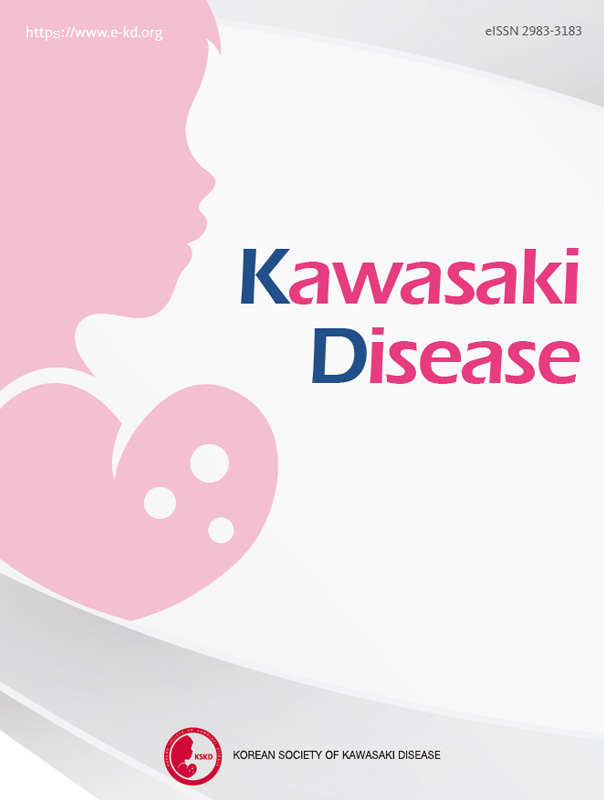Editorial Workflow
1. Initial submission
The corresponding author submits the manuscript through the submission system. (https://submission.e-kd.org) Create an account by clicking on "Sign up" and use your current email address as your username.
If you have forgotten your password, click on "Find Password" and you will receive your password via email.
Once logged in, click "Author mode".
On the "Author" screen, click "Submit New Manuscript" to view the "Author Checklists" and follow the six steps below.
- Step 1. Manuscript Type & Category: Select the type and category of your manuscript.
- Step 2. Pre-submission checklist
- Step 3. Title and Abstract: Enter a title, short title, abstract, and keywords.
- Step 4. Authors and Affiliation: Create a list of authors first. After creating the author list, create the affiliation. Link to the author's affiliation number.
- Step 5. Additional Information: You can recommend or decline reviewers, and enter cover letter, funding information, COI, and IRB.
- Step 6. File Upload: Upload required files such as title page, manuscript, and copyright transfer agreement, and click "Make Review PDF" to generate a review PDF.
- Step 7. Submission Preview: Check that the information related to the submission is correct and submit the article.
2. Submitting a Revised Article
- Revised manuscripts should also be uploaded through the submission system. If the revised manuscript is not uploaded within 60 days without any notice from the lead author, it may be rejected by the Editor-in-Chief.
- The corresponding author should carefully review the reviewers' comments and indicate any revisions to the manuscript (underlining or highlighter function).
- When revising the manuscript, prepare a list of responses to the reviewers' comments and upload it with the revised manuscript. Authors who do not wish to follow the reviewers' comments and recommendations must provide a reasonable explanation.
- Authors whose manuscripts receive a "minor revision" or "major revision" decision must upload a revised manuscript within 60 days of being notified of the review outcome.
- Please read the instructions and reviewer comments carefully and revise accordingly.
- To submit a revised manuscript, click on the "Incomplete Submissions Being Revised" item in the Author Mode of the submission system, locate the manuscript and click on "Edit/Submit Manuscript".
- Write a detailed response to the reviewers' and editorial board members' comments and upload the article using the same process as for the initial submission. If you need to change the author list, you must notify the editorial board using the submission letter.
3. Review Process
The submitted manuscript will first be evaluated at the editorial board regarding the possibility of plagiarism, completeness of the submitted materials, and their suitability to KD. Prior to the peer review, the editorial board can reject manuscripts for misconduct, or request the authors for explanation. Manuscripts may be returned to the authors at this stage if they have serious flaws or are not suitable for KD. Submitted manuscripts will generally be reviewed by the editors and two peer reviewers. The reviewers make suggestions to the editorial board. KD performs double-blinded peer review of the submitted manuscripts. Neither the peer reviewers nor the authors are revealed to each other. Authors may suggest preferred reviewers. However, this suggestion may not be accepted by the editorial board. The authors can monitor the progress of the manuscript throughout the review process at the submission system (https://submission.e-kd.org/).
The first review is finished within 60 days after the first submission. Reviewers consider the originality, scientific importance, study design, methodology, brevity in expression, priority for publication, and potential for revision. Reviewers should provide constructive criticism on the parts requiring revision. Submitted manuscripts will be rendered one of the following decisions: Accept, Minor Revisions, Major Revisions, and Reject. A revision needs to be submitted within 60 days of the decision. Otherwise, the manuscript is regarded as a new submission.
1) All submitted manuscripts are subject to the Turnitin, and the editorial office can reject the manuscripts suspected of plagiarism.
2) Manuscripts for case reports regarding diseases that have already been reported cannot be published. However, they may be published after proper review process if they contain a discussion over unknown aspects of the disease, new diagnostic and therapeutic modalities, and unknown associated diseases.
3) If manuscripts regarding drugs or equipment have a potential for commercial use, the editorial office can consult proper specialists on them.
4) Manuscripts containing the contents that have already been rejected by KD can be published only if substantially improved.
5) The editorial board reserves the right to make corrections to literary and technical flaws found in the accepted manuscripts after proper communication with the corresponding authors.
6) The editorial board can refer the editing process to outsourced manuscript editors.
The decision to accept a manuscript is not based solely on the scientific validity and originality; other factors are considered, including the extent and importance of new information in the paper as compared with that in other papers being considered, the journal's need to represent a wide range of topics, the overall suitability for KD, and research and publication ethics.
Decision letters usually, but not always, convey all factors considered for a particular decision. Occasionally, reviewers’ comments may appear to be inconsistent with the decision, which takes into consideration reviewers' comments as well as the additional factors listed above.
4. Galley proof
The corresponding authors will receive an email with attached proofs in PDF format. The editorial board retains the prerogative to question the authors about major alterations that might affect the scientific content of the manuscripts. The authors should minimize revisions other than correcting errors or answering the editorial queries. If the author-corrected proofs are not returned within 48 hours, the editorial board proceeds with the publication, regarding the absence of reply as the agreement on the editorial corrections. The authors are responsible for any fault found after the publication.








